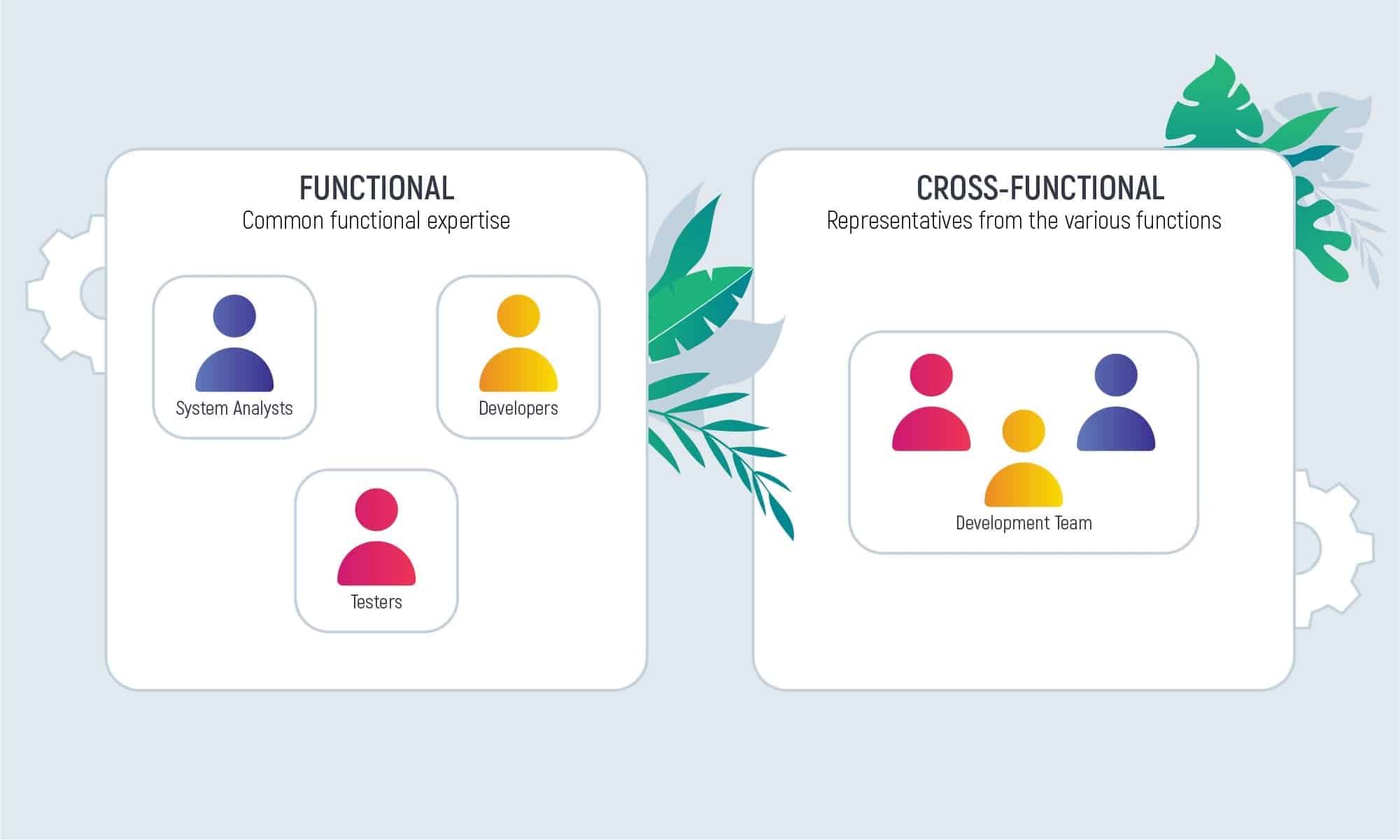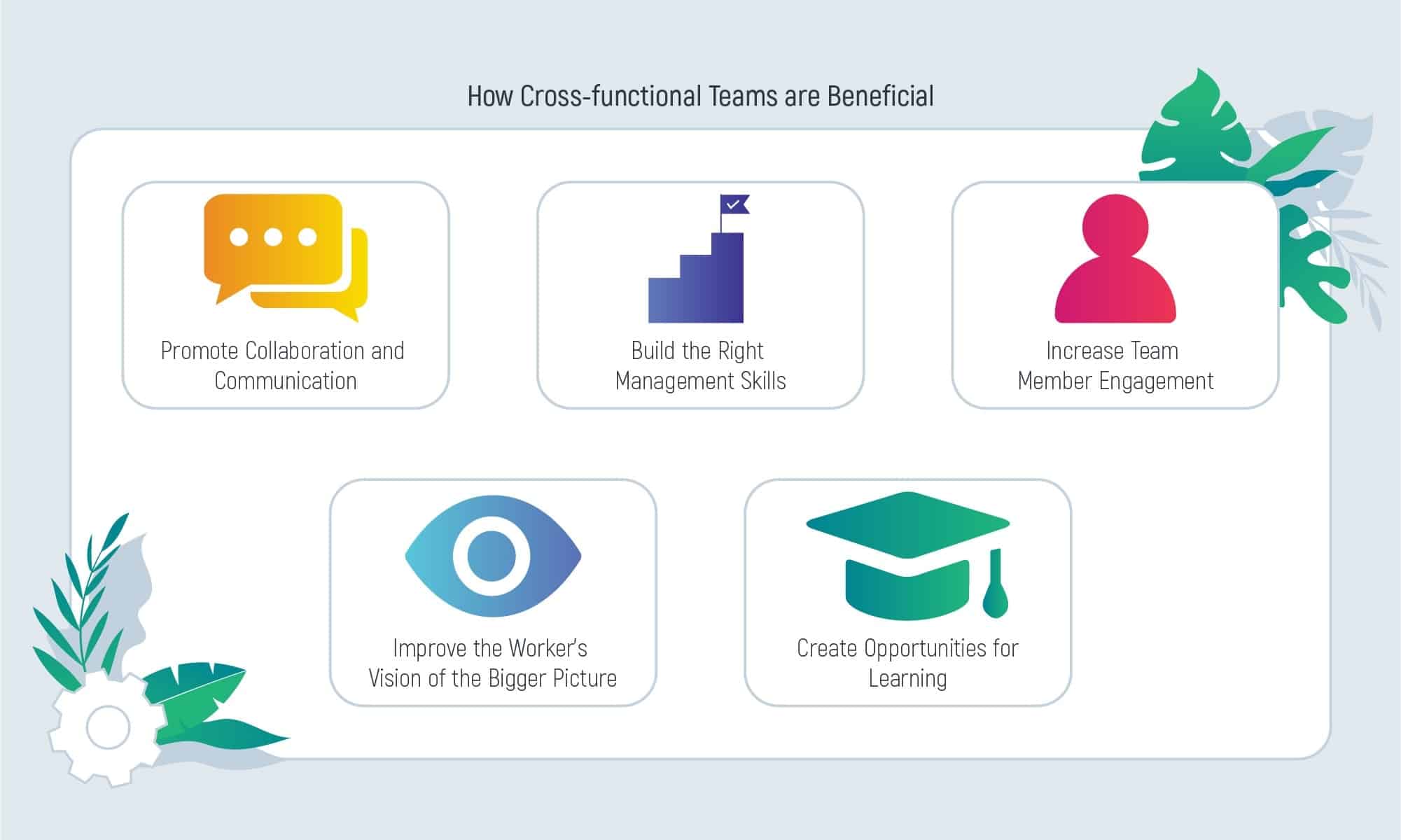Today, Google trends reveal that cross functional teamwork is the topic of ongoing interest. Many businesses see high potential in the collaboration of such different team members. But due to having little knowledge of the process of cross-functional team management, not all businesses succeed. At least, at first. Information is power. And, practice makes perfect.
For instance, Deloitte's survey shows that 73% of companies create a specific environment for cross-functional teams to succeed. So, businesses don’t just jump into cross-functional development with their head over heels. On their way to integrating cross-functional cooperation models, there are 48% of developing companies and 29% of startups. Steady steps and concrete planning are the key principles they've decided to adopt.
Companies offering great services have lots of secrets up their sleeve. They make up ways to be productive and to meet clients' goals easier. And, one of these methods includes the cross-functional collaboration of their teams. What is cross-functional integration? What is the importance of cross-functional integration? Is a new reality making this trend go away or stay? Let’s explore.
- What is Cross-Functional Integration?
- Main Cross-Functional Aspects of Integration to Consider
- Identify a team member with the best skillset
- Make sure the right people are selected
- Build ongoing relationships with stakeholders
- Invest in collaboration software
- Encourage cooperation between different departments
- Goals should be mutually supportive
- 6 Benefits of Including Cross-Functional Integration for Product Development
- Strategy alignment
- Customer focus
- Innovation opportunity
- Iteration speed
- Problem-solving
- Job satisfaction
- How Product Development Improves When Working with Cross-Functional Integration?
- Final Thoughts
- Consider Inoxoft Your Trusted Partner
What is Cross-Functional Integration?
IGI Global defines cross functional integration as:
The process of combining various functional business activities within an organization. It is done by bridging the boundaries and enabling the flow of information among the various organizational functions.
To put it in simpler words, it is the process of collecting team members from different departments and putting them onto one team. This team is given its goal. To achieve this goal they have to communicate, share information, insights, techniques of work, etc. Why is it needed? To promote software development life cycle knowledge. Maybe, even to become more agile. To implement department-relevant techniques and tools and advance. Anything is possible with a forward-thinking team and sharp minds. The idea is to make up as many solutions as possible.
Arena shares a great thought on the use of cross-functional integration:
… we’re pulling people together for a specific purpose … They’ve got these milestones and … they’re dedicated to getting something across the finish line … Then those team members are going back to their steady-state jobs where we’re going to ask them to help diffuse this out across the broader organization.
So, to sum up, here, the main goal to collaborate cross functionally is:
Main Cross-Functional Aspects of Integration to Consider
Implementing of cross-functional integration requires understanding that there might be some moments of clash. So, the very process of integration and its seamless setup counts much when it comes to different work outlooks and skillsets.
To achieve 100% efficient team collaboration, you should:
Identify a team member with the best skillset
The cross-functional team always includes people with different knowledge, seniority levels, and skills. But, there is this one person, who can lead the whole group. This person is usually the “the-know-all” type. And, has strong leadership and communication skills, the ability to plan several steps ahead, set the working speed, and stick to what was defined. He or she can cope with team management with flying colors. And, inform the client of the covered processes in the SDLC. For instance, it is a project manager. This person does not only make team bonding easier but is involved in the monitoring of the team’s progress on the project.
Make sure the right people are selected
There are different client project requests. These may require different seniority levels and opinions. But, to ensure the people on the team are the right ones, you should check several things. These might include:
- Knowledge of technologies and tools
- Seniority level and skillset
- Communication skills
- Ability to work in a team
Working with various people can have certain risks. Maybe, some of them won’t get along. And, the others will act too independently to be on a team. Ensure the people you have grouped together really match.
Build ongoing relationships with stakeholders
Every stakeholder matters. And, to receive maximum positive results from collaborating with cross-functional teams, it is best to become partners once and for a long time. Get your vision straight and be on the same page with everyone. Especially, if you are a project manager.
Invest in collaboration software
There are different means a cross-functional team collaboration can be supported. For instance, it would be easier to work using Jira, Confluence, Slack, and other channels. All these software tools bring the team to one working environment with requirements and documents. Here, a PM can assign tasks, developers can share code, QAs will be able to test, and designers to perform user journey mapping. And, the most important thing is, that they will see every detail of a project, the percentage of completion, and communicate on the spot. It seems more convenient to have a collaboration platform than not to. No matter the costs, it will be useful throughout any project.
Encourage cooperation between different departments
Different departments work according to their schemes and principles. But, knowledge sharing among them is important as well. For example, the engagement department can share client involvement successes with the marketing department. And, vice versa. QAs can share their thoughts on app architecture and logic just by testing all the functional features. In their turn, coders can make an opinion of whether the design is not too complex and the UX will be great for the end-users. The goal is to cooperate and create new ways of successful project delivery.
Goals should be mutually supportive
Within a development team, every goal there is should receive mutual understanding and support. A team that is cross-functional and may not be aware of all the processes of their colleague’s job, should, at least, focus on the same outcome. And, in this case, it is the smooth delivery of quality software.
6 Benefits of Including Cross-Functional Integration for Product Development
Product development is a long process. It requires dedication, motivation, creativity, and strong technical knowledge. Especially, if the product is something complex. So, businesses may need a cross-functional team to make this process more of a positive journey. Here, the benefits of cross-functional integration will include:
Strategy alignment
Being agile in your approach makes the product development process go in sprints. But to shape each sprint and adjust it to form a product development lifecycle, it is vital to align a strategy. Here, the strategy looks like a formation of ORIENTATION and TRUST BUILDING. The defined strategy will answer the questions of “Why am I here?” and “Who are you?”
Customer focus
In product development, every team member should focus on one thing – the customer’s goal. This goal is a specific need or value the team has to meet. This would be a stage of GOAL CLARIFICATION. And, setting the right priorities. The outcome of this stage is the answer to the question “What are we doing?”
Innovation opportunity
Innovations occur during several brainstorming sessions within a cross-functional team. And it is a challenging process as sharing thoughts and opinions, crossing out unrealistic things, and highlighting what’s great to have are COMMITMENT’s major purposes. Creativity and integrated ideas can be transformed into the best product. That’s what makes the innovative impact of cross-functional integration on a developed product. The question that will be answered here is “How will we do it?”
Iteration speed
Due to open conversation and shared purpose, it is possible to boost IMPLEMENTATION. Different team members can have their assignments and the work will be done parallelly, which will allow for testing of the product on time. As well as, release it meeting the deadline. If designers have made their part and developers have written the code, testers can test the feature of a product simultaneously. This will mark true cross-functional teamwork and enhance the process of delivery. Also, it will mark truly HIGH-PERFORMANCE methods. The question that needs a clear definition is “Who does what, when, and where?” If this question is answered, then comes the stage of productivity with a huge “Wow!” effect.
Problem-solving
Efficient problem solving is in hearing out all the possible ways to meet any criteria and overcome any issue. Here, solutions that might have never come to your head can be offered in a “piece of cake” manner. Having such a discussion is valuable for the cross-functional team. And it becomes reliable for the product afterward. This is also a part of the COMMITMENT and HIGH-PERFORMANCE stages. So, the team solves the question of “How will we do it?” and receives the “Wow!” effect.
Job satisfaction
Learning to work together to achieve the same goal is a unique opportunity to grow organically. Especially, if you have a product person on the team. A person like this is a gem to support your cross-functionality. And, share valuable insights. This may be called the process of RENEWAL, where you learn and wait for the new challenges to come your way. Here, you can dwell on the question of “Why continue?” and find your own answer.
How Product Development Improves When Working with Cross-Functional Integration?
The advantages of cross-functional integration in product development are very satisfying. These include:
- Reduction of the software development cycle time
- Flexibility and adaptiveness to market changes
- Elimination of the outdated product mentality
- Conscious cooperation in achieving the best product outcome
All of these improvements bring product development to a higher level. And, they make product development teams more desirable in the eyes of potential clients.
Final Thoughts
To conclude, trends are changing. With the advancement of technology, cross-functional teams became popular. It is all so because they can bring innovations, creative thinking, and bright game-changing ideas. And, also, lead the process parallelly to meet the exact deadlines. This is what product owners want. This dedication is what clients specifically need to grow their businesses. Cross-functional integration is the future of software development.
Consider Inoxoft Your Trusted Partner
Inoxoft is one of the top market companies providing software development services. We tend to go hand in hand with the trends and our development teams are also cross-functional. What does that give us? Mainly, a better understanding of your product and better services to offer. Inoxoft has a dedicated development team ready to take on a new challenge. Our skilled experts are aware of the stages of app development and can make each of these 100% efficient. Among the vast list of benefits of Inoxoft are our software integration services. Just give us a chance to prove it!
Check out our home page with the services we provide, technologies we work with, and industries we focus on. Be sure, that with Inoxoft you will get the best team possible. Contact us and get a free consultation on your project idea. Challenge us and we will accelerate your business growth!
Frequently Asked Questions
What is an example of cross-functional integration?
It is a team of different experts that are grouped to build a product together.
Who on the team should lead the cross-functional integration effort?
A true leader can be a project manager. The project manager has all the skills and the knowledge to bring different people together and make them motivated to work as one team.
In which projects cross-functional collaboration is used?
Innovative projects that need to be developed faster and with better problem-solving and brainstorming skills of cross-department members.












